Share this
Differences Between Sloped and Flat Roofs
by Michael Wilhelm on May 22, 2023 12:57:02 PM
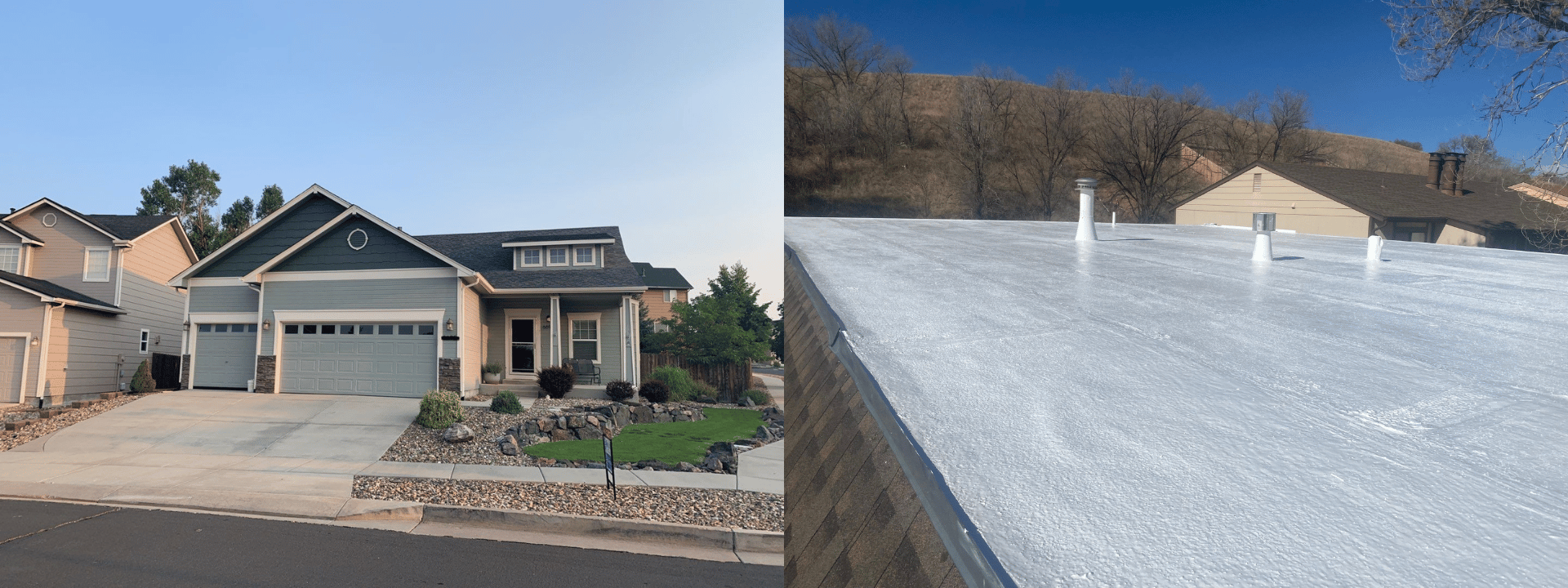
What Makes a Roof Flat or Sloped?
The largest factor that defines the difference between a flat and sloped roof is the slope of the roof. In the roofing industry, roof slope is typically referred to as the ratio of the roof’s rise (or vertical height) over the roof’s run (or horizontal distance). The slope is usually expressed as a ratio of inches of rise per foot of run or as an angle in degrees. As you can see in the photo below the roof is measuring 4:12 (or 4 inches of rise for every 12 inches of run).
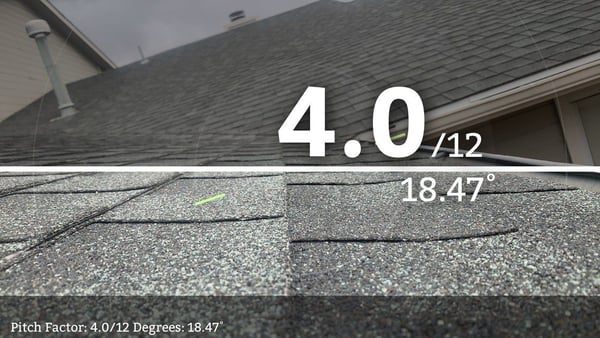
To calculate the slope of a roof, you will need to measure the rise and run of the roof. The rise can be measured by determining the height of the roof at its highest point, and the run can be measured by measuring the horizontal distance between the highest point and the lowest point of the roof.
Once you have these measurements, you can use the following formula to calculate the slope: Slope = Rise / Run
For example, if the rise of the roof is 6 inches and the run is 12 inches, the slope would be: Slope = 6 inches / 12 inches = 0.5 inches of rise per inch.
Now, you are probably thinking that math seems confusing and daunting. The good news is you can download the free app called Roof Pitch Factor on your smartphone and the app will make the process of measuring your roof slope simple. The app is very easy to use and many of our team members use it daily. A photo of the app icon has been provided below to help in your search for the app.

Typically, slopes that are less than 2:12, or 2 inches rise per 12 inches run, are considered flat roofs. Knowing what is considered a flat or sloped roof is key not only in determining the code requirements for installing a new roof but for the material requirements as well.
Materials: Flat vs Sloped
The materials that are used for flat and sloped roofs are vastly different. Flat roofing materials are specifically designed to go on a shallow sloped roof, anything less than 2:12. Conversely, sloped roofing materials are designed for roofs with a steeper slope, 2:12 and up.
Flat Roofing Materials
There are several materials commonly used for flat roofing, each with its own advantages and disadvantages. Here are some of the most popular flat roofing materials:
TPO: Thermoplastic Olefin (TPO) is a lightweight and durable synthetic material that is becoming increasingly popular for flat roofing. It is highly reflective and energy-efficient, but it can be more expensive than other materials.
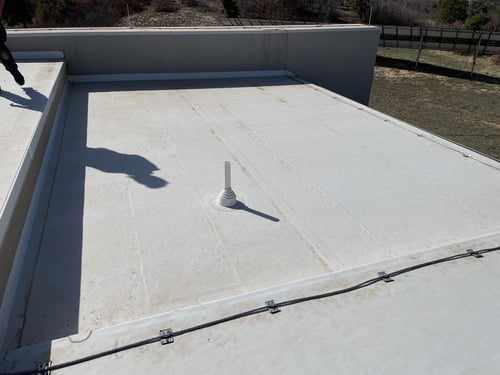
EPDM: Ethylene Propylene Diene Monomer (EPDM) is a synthetic rubber material that is highly resistant to UV radiation and weathering. It is also easy to install and repair, but it can be more expensive than other materials.
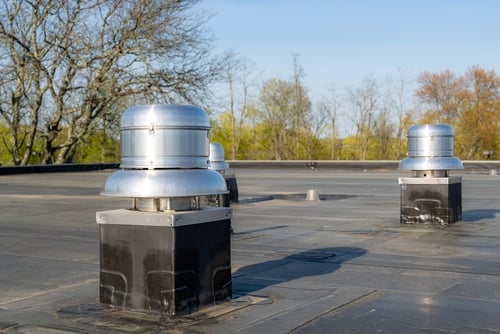
Modified Bitumen: durable and weather-resistant material made by adding rubber or plasticizers to asphalt. It offers enhanced flexibility, elongation, and resistance to temperature extremes, UV radiation, and physical stresses. Installed in rolls or sheets.
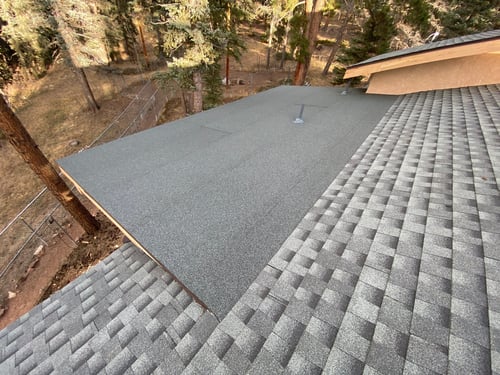
Metal: Roofing can be a durable and long-lasting option for flat roofs. It is also highly reflective, which can help reduce energy costs. However, it can be noisy during rain or hail storms and can be more expensive than other materials.
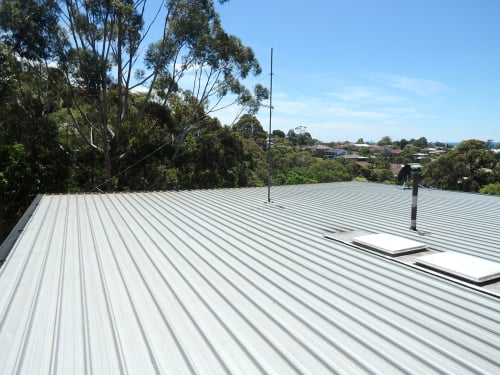
Spray Foam Roofing: Roofing system that involves the application of a liquid foam material onto the roof surface. The foam expands and forms a seamless, waterproof barrier that adheres to the roof substrate.
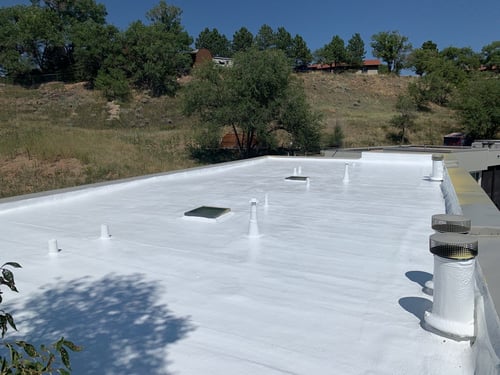
Sloped Roofing Materials
There are several materials commonly used for sloped roofing, each with its own advantages and disadvantages. Here are some of the most popular sloped roofing materials:
Asphalt shingles: Asphalt shingles are the most common roofing material used for sloped roofs. They are inexpensive, easy to install, and come in a variety of colors and styles. However, they can have a shorter lifespan than other materials and may not be suitable for all architectural styles.
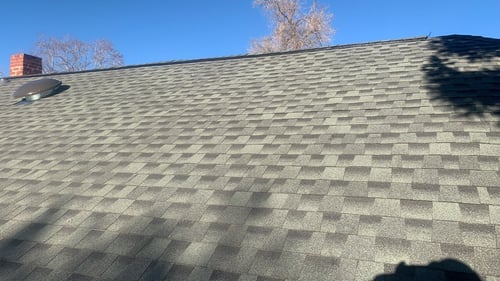
Metal: Metal roofing is a durable and long-lasting option for sloped roofs. It is also lightweight, fire-resistant, and energy-efficient. However, it can be more expensive than other materials and may be noisy during rain or hailstorms.
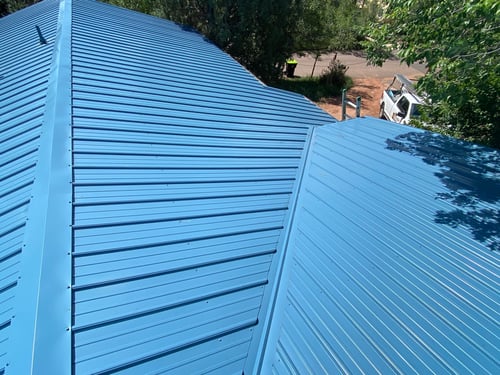
Clay and Concrete Tiles: Clay and concrete tiles are a popular roofing material for sloped roofs in areas with hot climates. They are durable, long-lasting, and provide good insulation. However, they are heavy and require a strong roof structure to support them.

Synthetic Shingles: Synthetic roofing materials, such as synthetic slate or cedar shakes, are becoming increasingly popular for sloped roofs. They are designed to mimic the look of traditional roofing materials but are more durable and require less maintenance. However, they can be more expensive than other materials.
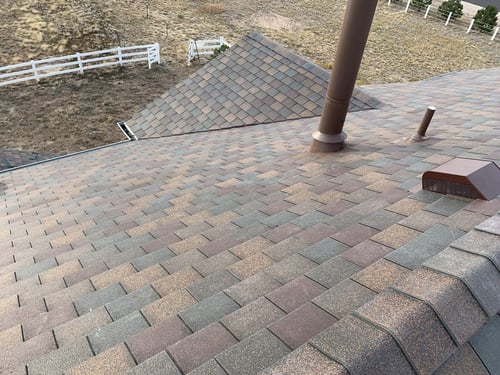
Flat Roofs
Flat roofs are typically seen on large commercial, industrial, or public buildings where large HVAC systems are needed. Flat roofs can be found on smaller residential buildings like homes or condos, though that is less common in climates that see a lot of rain and snow. Regardless of the type of building a flat roof is on, they do have their benefits and drawbacks.
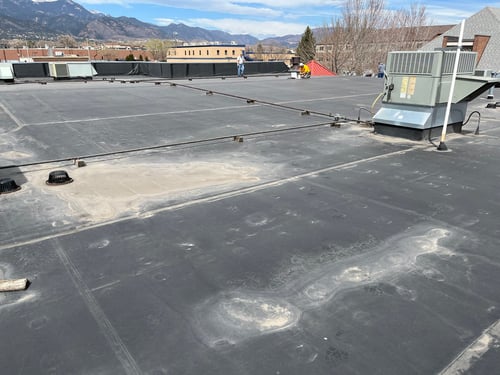
Benefits of a Flat Roof:
-
Accessibility: Flat roofs are easier to access than sloped roofs, making it easier to perform routine maintenance, such as cleaning gutters and checking for damage.
-
Versatile: Flat roofs are more versatile than sloped roofs because they can be used as outdoor living spaces, green roofs, or even to support solar panels.
-
Space-efficient: Flat roofs can also be used as additional storage space or to create a rooftop garden.
-
Modern appearance: Flat roofs can give a building a modern and minimalist appearance, which is why they are often used in contemporary architecture.
Drawbacks of a Flat Roof
-
Drainage problems: Flat roofs are more prone to drainage problems because water can pool on the surface if there is not enough slope or if the drainage system is inadequate.
-
Maintenance: Flat roofs require regular maintenance to prevent leaks and other problems. The lack of slope also means that debris, such as leaves and twigs, can accumulate on the surface and cause damage if not removed.
-
Weathering: Flat roofs are more exposed to the elements than sloped roofs, which can lead to weathering and deterioration over time.
-
Heat retention: Flat roofs can absorb and retain more heat than sloped roofs, which can increase cooling costs during hot weather.
Sloped Roofs
Sloped roofs are far more common than flat roofs in many parts of the U.S. due to their versatile nature. Most buildings will have a sloped roof installed on it to avoid the drawbacks of a flat roof. Sloped roofs, however, have their own set of benefits and drawbacks.
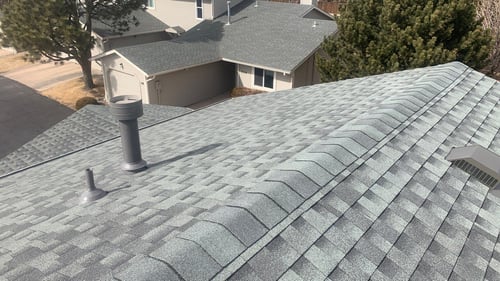
Benefits of a Sloped Roof:
-
Drainage: Sloped roofs are designed to allow water to drain off easily, which reduces the risk of leaks and water damage to the building.
-
Durability: Sloped roofs are generally more durable than flat roofs because they are better able to withstand the elements, such as rain, snow, and wind.
-
Versatility: Sloped roofs can be designed in a variety of styles to match the architectural style of the building, including gable, hip, mansard, and butterfly roofs.
-
Aesthetics: Sloped roofs can add aesthetic appeal to a building and are often seen as more traditional and classic than flat roofs.
-
Energy efficiency: Sloped roofs can be designed with features, such as ventilation and insulation, that can improve energy efficiency and reduce heating and cooling costs.
Drawbacks of a Sloped Roof
-
Maintenance: Sloped roofs can be more difficult to access and maintain than flat roofs, especially if they have a steep pitch or are located at a high elevation.
-
Accessibility: Sloped roofs can be more difficult to access than flat roofs, which can make it more challenging to install equipment, such as solar panels.
-
Design limitations: Sloped roofs may not be suitable for all architectural styles and may not be able to accommodate certain features, such as rooftop gardens.
What Next?
We hope you understand the differences between sloped and flat roofs. If you’re still looking for a quality contractor, you can find an article on how to find the right roofing contractor for you here.
Since 1979, Holladay Grace has handled every project as if it were our own home. If you’re local to the Colorado Springs community, we would be pleased to help you with all of your roofing needs.



No Comments Yet
Let us know what you think